Tony Judd shares his memories of purchase and delivery of the smack yacht ‘Diamond’ in autumn 2013, based on extracts from his Log. No longer in his custodianship, she’s now based at Pin Mill looking forward to joining OGA events again next year.
After the shock of selling the 108 year old ‘Alice & Florrie’ following 23 years ownership, it was an open question whether to give up the sea; buy a period motor boat to give easy travel on the East coast which we were experiencing on Midlands rivers with ‘Ivy May’; or to buy another sailing boat. The thrust of the plan was a motorboat and we searched Milford Haven, Beccles, Windsor, Maldon and Poole. ‘Sirius Star ‘of Poole was the best of the bunch for me but Shirley was having doubts. During our search, we had seen a Hayward Bawley yacht, ‘Lapwing’ very similar to Alice, but she was a big project. We found a Tyrrell & Young smack yacht, ‘Diamond’. She’s moulded from the hull of the 1922 Paglesham smack yacht ‘Secret’. She felt just right, smaller, less maintenance, decks that don’t leak, 86 years younger, tacking without going on the foredeck . . . I came away saying that if it was to be another sailing boat, here she was.
25 October 2013
The deal was done. She had tacked and manoeuvred effortlessly as we wove about the top of the Medway estuary on the acceptance sail. I needed a new dinghy. Catherine Dines, of M J Lewis yacht brokers, quickly sourced us one which we bought on the strength of a thoroughly unflattering photograph. ‘Diamond’ was moved to Gillingham Marina but the weather forecasters had been predicting 90mph winds for a week and there were other logistical problems. I’d need to sail to the Blackwater, beating up to Downs Road boatyard, Maldon to fetch the dinghy, back onto my mooring in Alresford Creek with the dinghy to get ashore, at neap tides to do the trip in daylight with the marina lock closed before 8am in winter. Meanwhile, Autumn had woken up and the Atlantic was now powering in with one formidable low pressure system after another. Weather windows were few and brief. Only a fool or a very confident man takes a new boat to sea on a good forecast knowing that if he is delayed by only a few hours, the next gale will be upon him.
11 November, 2013
I’d decided to split the problem and hired a van to fetch the dinghy to float it astern in the Marina. To my delight the boat was stout, shapely and rowed very well. Better still, she looked a mess, ideal for Alresford Creek (not looking worth stealing). She had already collected the name ‘Little Diamond’ in correspondence. I wanted to call her ‘Little Gem’, after the lettuce, but as ‘Gem’ was the name of the wonderful ocean cruiser owned by the late great Arthur Keeble of Downs Road Boat Yard, I thought better of it. Now I just needed two good days. Lack of available crew meant the trip would have to be done alone. With a strange boat, I really needed calm weather.
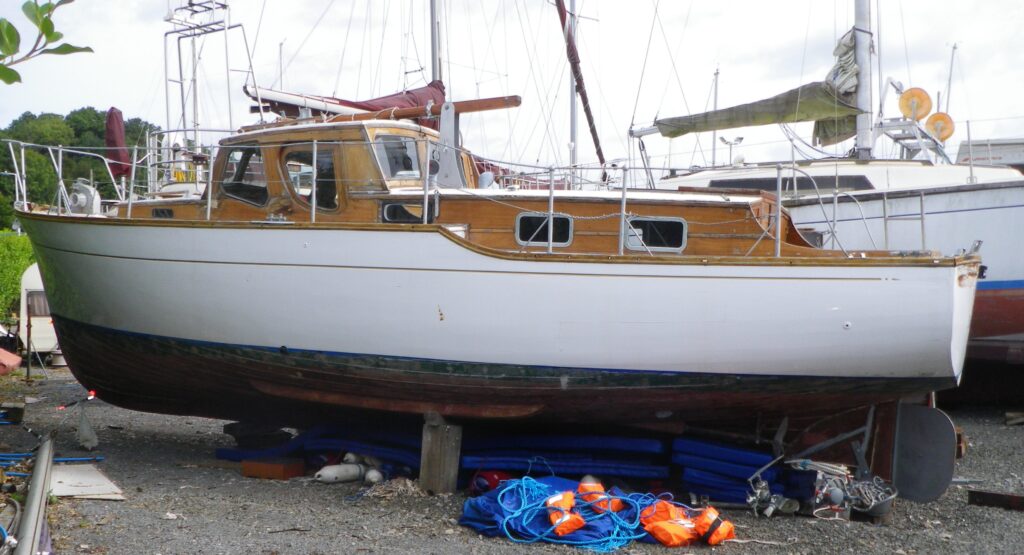
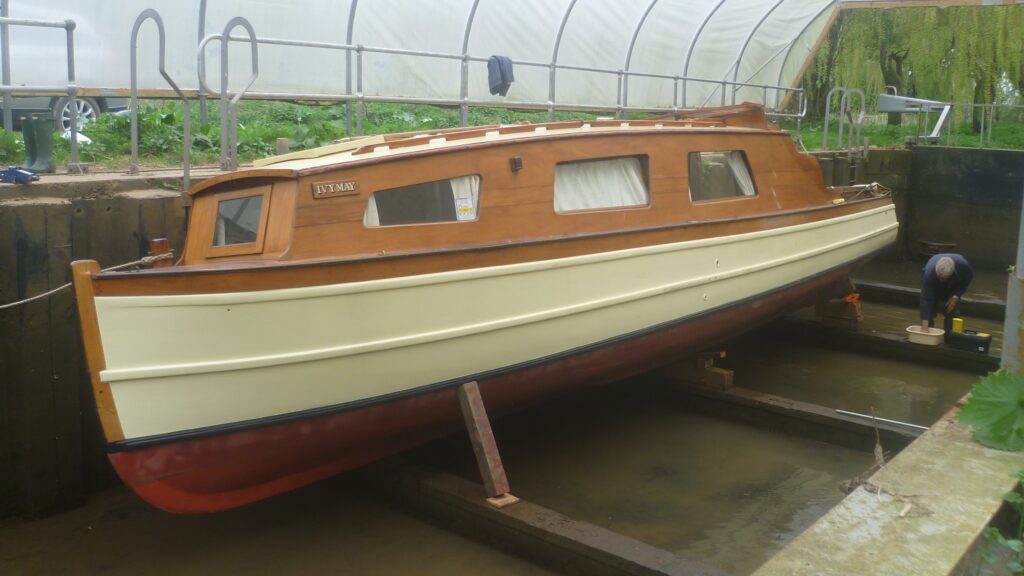



Friday 15 November, 2013
Sleeping aboard on Thursday, I was out with the tide in the morning, picking up a buoy across the river and taking time to work out and rig the steeving bowsprit, Wykeham Martin roller reefing jib, check the workings of the windlass (new to me), hoist and set the main. With the wind West F3 (forecast NW 5-7) I boldly sailed off the mooring and headed down river, very soon hauling my wind as it veered into the North, even with some East at one point, and freshened. The Medway looks straightforward on the chart, but I haven’t sailed it for decades. I suddenly realised things were wrong, Darnet Ness Fort was missing. I then grasped I had sailed south of it, not north, so doubled back quick before I would ground on the falling tide. It was a good limber up sail and the first chance to stow sail in a bit of a lop, not polished, but achieved. Then motor into Stansgate, followed by Sharfleet Creek. My chart showed a green lateral mark as sitting on the end of the spit, with a wreck on the west side of the Sharfleet entrance, opposite the buoy.
Next problem was the depth of water. No-one wants to anchor in 50’ HW, especially not with a new boat and unfamiliar windlass, so I looked for about 4 metres half ebb and found it. However it probably took longer to drop the hook than I realised and I drifted back into shallower water close to the point before bringing up. Confident that the anchor was in 4 metres, I sheared the tiller to kite me out into deeper water and so low water was no drama. However, in the night I arose to find a faint breeze from the West, not North, and this was enough to put me in danger of grounding well before low water, and worse, laying right over on the steep-to bank. Worse still I realised that anything I did, would have me kite into the bank immediately. I judged the only option was to rely on the tide to hold me off with a fully sheared rudder, but towards low water this would fade, and the boat would swing in and ground. The anchor chain against the bobstay would tell me when. I hoped this would be at the last hour of ebb. When this did indeed happen, I started the engine, wound in chain to up and down, and motored the anchor out with my heel already on the mud, and re-anchored in a safer position. This drama began at 11pm and ended at 5am. So I got ready there and then and set off at 6am on my 35nm journey against the tides.
Saturday 16 November, 2013
No ships were moving in the Medway and I crossed to the north side in the dark. My plan said be at Garrison Point for 0715 and I was, but outside I soon found myself in a race of incoming tide. Such rips were localised so I ventured onto Grain Spit in the tide lee of the wreck of the ‘Richard Montgomery’. Even so, as there was just enough wind to justify sails and I figured they would help the engine, up they went, losing more ground. Wind F2 West, weather bright clear and sunny. At first sails did not help much, even once the reef was out, but soon the problem became second guessing the routes of ships coming in and out. Picking my time I sheared across the tide, for which the sails were a great help and soon fetched up by the Shoebury Barrier Tower. I had crossed the Thames and all shipping lanes too, so it was down to the painful progress of reaching the South Shoebury Buoy before shearing in across the sands to the Havengore. It was becoming clear I would run late and I had made up my mind to tough it out and go round the outside. I saw another yacht cutting the corner right off, so I gybed, hauled my wind a little and romped into the Havengore approaches, making up time handsomely. Now it’s a strange thing, they say the bridge can be hard to see from deep water. I had it on visual, but lost it as I approached. This can only be because while still a mile or two out, the sea wall masks and hides the Havengore Bridge.
With the approach mark in view I hove to and stowed the sails, motored slowly up to what became the first of three marks. I don’t know which marked the Broomway, not the last I think, but the echo sounder dropped to 0.9m and I draw 1.2m. This was strange as I had checked the echo in the marina against the lead line and both read 1.8m. However the boat kept inching forward, drawn in by the current and I still had an hour and a half of tide. Past the last post it was time to find the line of starboard withies. As I followed these, the depth improved and by the time the bridge was gained, I had 3m. Following a cheery wave and exchange with the bridgekeeper, it was turn right into Narrow Cuts. This was going to be easy navigation as the saltings were still visible, the trip through the creeks into the Roach and Crouch was enchanting. The wind had died, the sun was out, the birds calling. I should have speeded up to try and make the Ray Sand Channel before the tide was away, but did not want to shorten this moment. Nevertheless I was now determined to get to Pyefleet today.
A wave of tiredness overwhelmed me as I entered the Crouch, but I drove this off with a cup of tea and carried on. I went out to the Spitway, via the northern channel, in the clearest air I have ever known and had fun using the i-Pad, loaded with Navionics, to skirt round the Buxey Sand and save two miles in the Spitway. Then it was the long slog against the worst of the Blackwater ebb to get up to Colne Bar, setting the course for the Eagle Buoy against the compass, 300 mag. Once facing WNW, in came a cool breeze from ahead as the sun went in and I became very cold. The Spitway was cleared at 13.50, but the hook went down at 16.50. It’s only eight miles. Dinner was cooked and served for an early night. For the record the 2GM20 had pushed 5.5 tonnes for 11 hours over 35nm, much against the tide, on 15 litres of diesel, therefore using only 6 of its 16 horsepower on average. There was help from the sails for two hours. At times the power demand would be half the average and at times closer to double. 1/2lb diesel fuel per brake horsepower/hour.
Sunday 17 November, 2013
In the morning a faint breeze from NE, so out came the reef again and a short sail before the breeze died completely at HW, about 12.00. By now I had become aware of an even tap, tap, tap and finally grasped it was a drip. Was it seawater or diesel? I couldn’t get the anchor down quick enough, drop the headsails, trice, and ruck the peak, then turf out all the lockers and hatches aft. The sound was traced to the port fuel tank and by now I could hear that it was a very rhythmic gloop sound, of air venting or diesel levels equalising. If I squeezed the polythene tank it stopped for a while or changed rhythm. No fuel or seawater seemed to be leaking from anywhere, so I closed all up again and eventually it stopped. The day started to close in and I was glad I’d kept going the previous day. Each end of the Pyefleet disappeared but the sides remained in view. A fine mizzle began so down came the main for a smart stow (easy when it’s still) and below I went, locked in a grey watery world shared only with hundreds of honking Brent geese, several vociferous curlews, two large flocks of lapwings, one of avocets, but no widgeon, godwits or redshank – they were all in Alresford Creek. Gulls and harriers were also absent, as were the noisy oyster catchers.

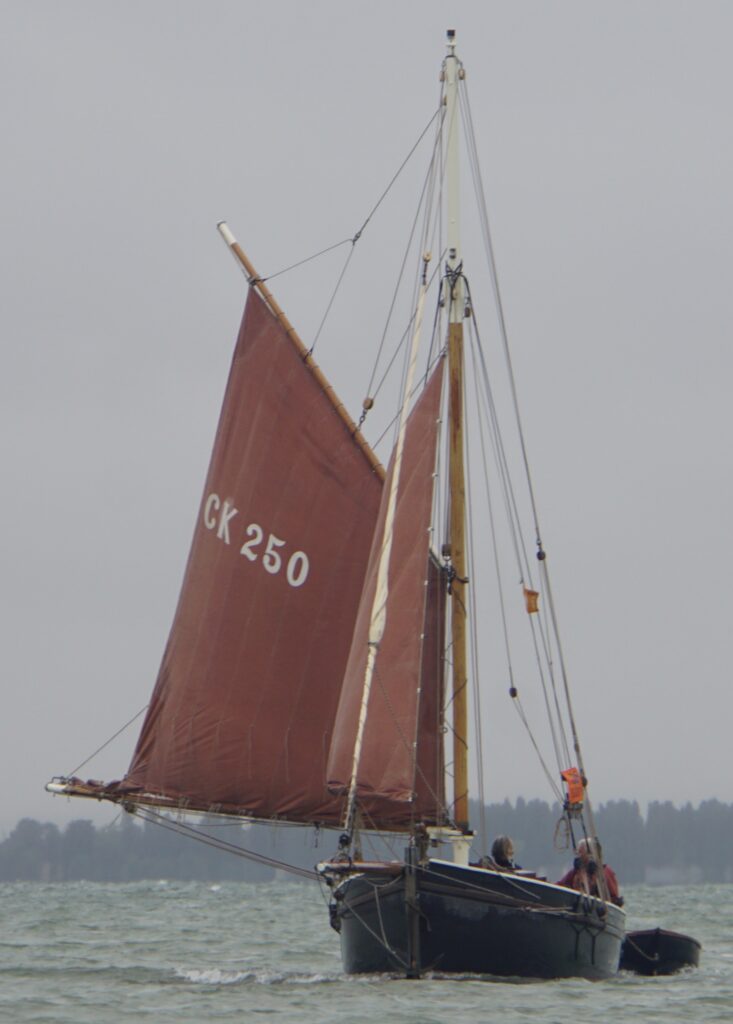
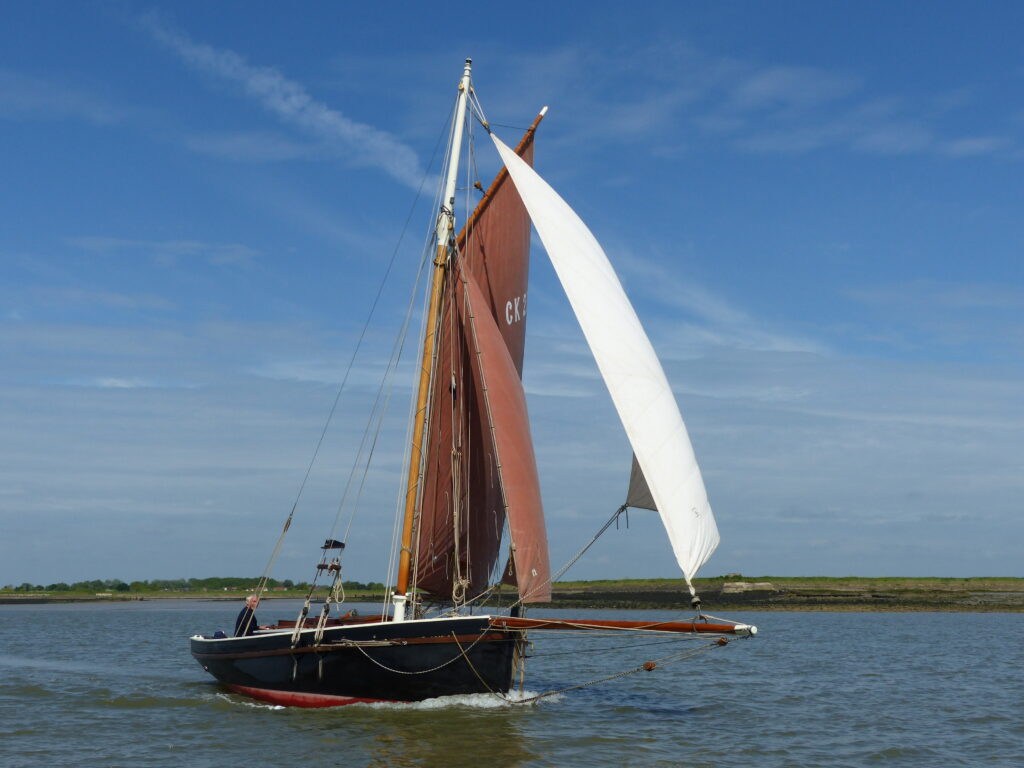
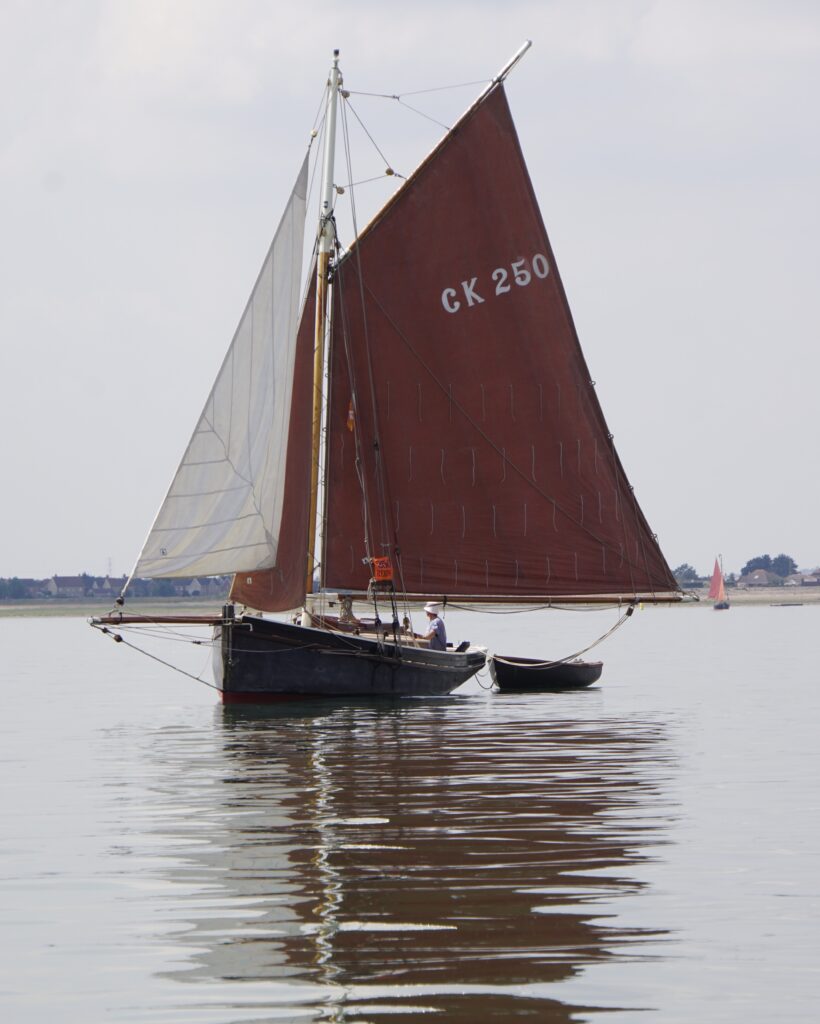
Monday 18 November, 2013
There was no change overnight or first thing, but now the business was to enter Alresford Creek. I suddenly realised I was running late and had decided to check the seawater engine coolant filter, which was clean. However on starting the engine it became clear that water was not flowing. Stopped quickly and checked the filter, priming it with the seacock shut. This helped a bit but for some reason the water flow was well down and hot. This was some worry all the way up the Colne. Manoeuvring at slow ahead in Alresford Creek I picked up my old mooring and the warning sounded; no water. I turned the engine off as quick as possible to avoid damage, finished the mooring arrangements and returned to the filter. Twice more I primed this and then the engine seemed to recover flow and the water temperature reduced. However I think the impeller may now be damaged and may have already been damaged to find pulling water so difficult. There is a spare on board and this should be fitted before leaving the creek again. The day had opened a little and I lit the fire. ‘Diamond’ settled nicely into the big wallow that ‘Alice & Florrie’ had created, sitting only a foot out of her marks in the mud soup. The mud surrounding the wallow is firmer and gel like, but no good for humans without splatchers. I hope the new boat doesn’t explore the rim and lay right over.
Tuesday 19 November, 2013
On a cold and breezy but sunny day at last, Shirley had collected my car and we met on the hard to empty the dinghy of all the gear and chain it up to my old post. Finally there was the 188 mile slog home, the end to the first adventure in ‘Diamond’. That trip involved six rivers and five creeks. It was nice to see it all again. I looked forward to happy sailing on the coast and creeks, and must re-explore the whole area.
Words: Tony Judd
Photos: Tony Judd, Sue Lewis & Beverley Yates

You must be logged in to post a comment.